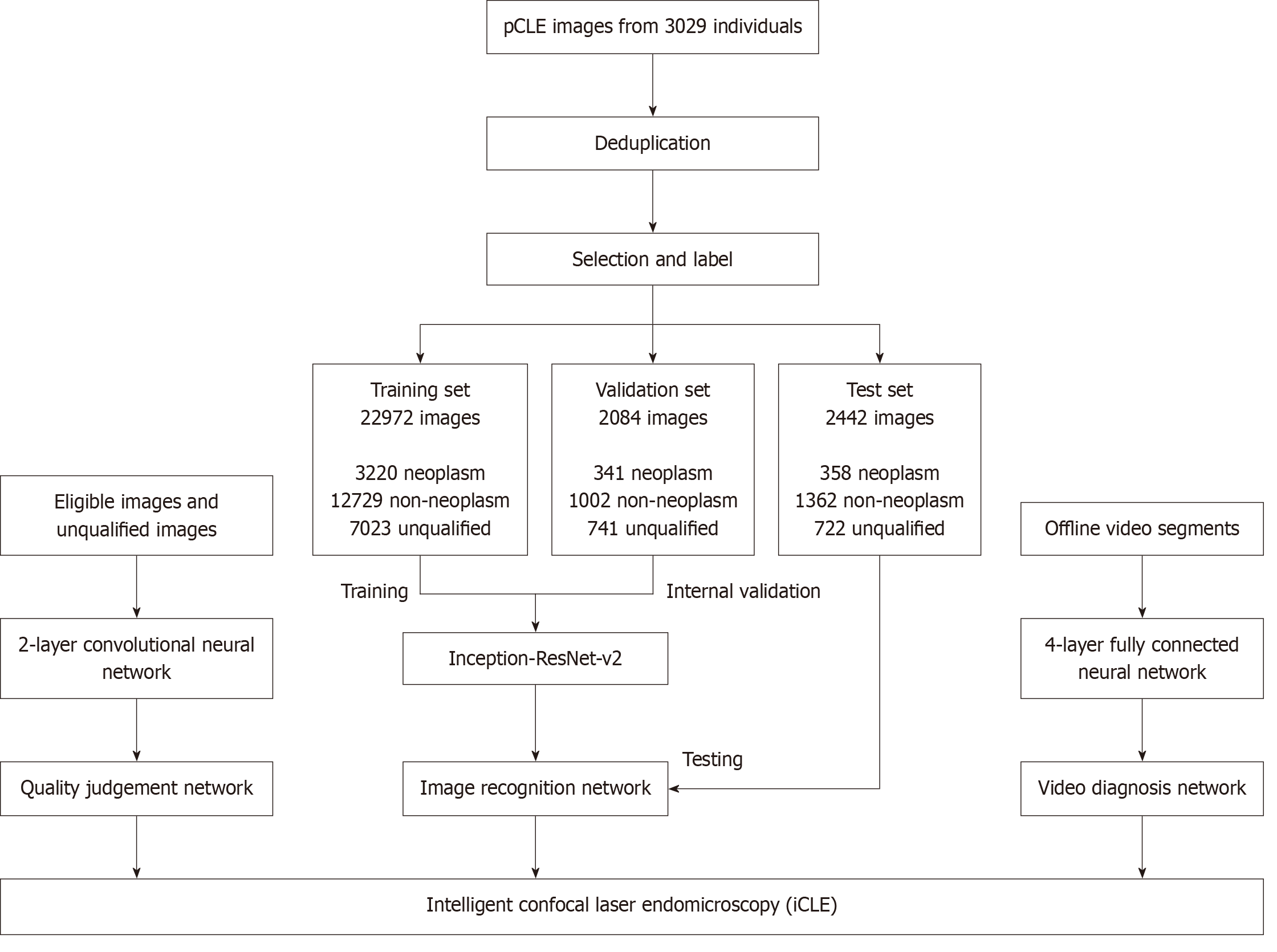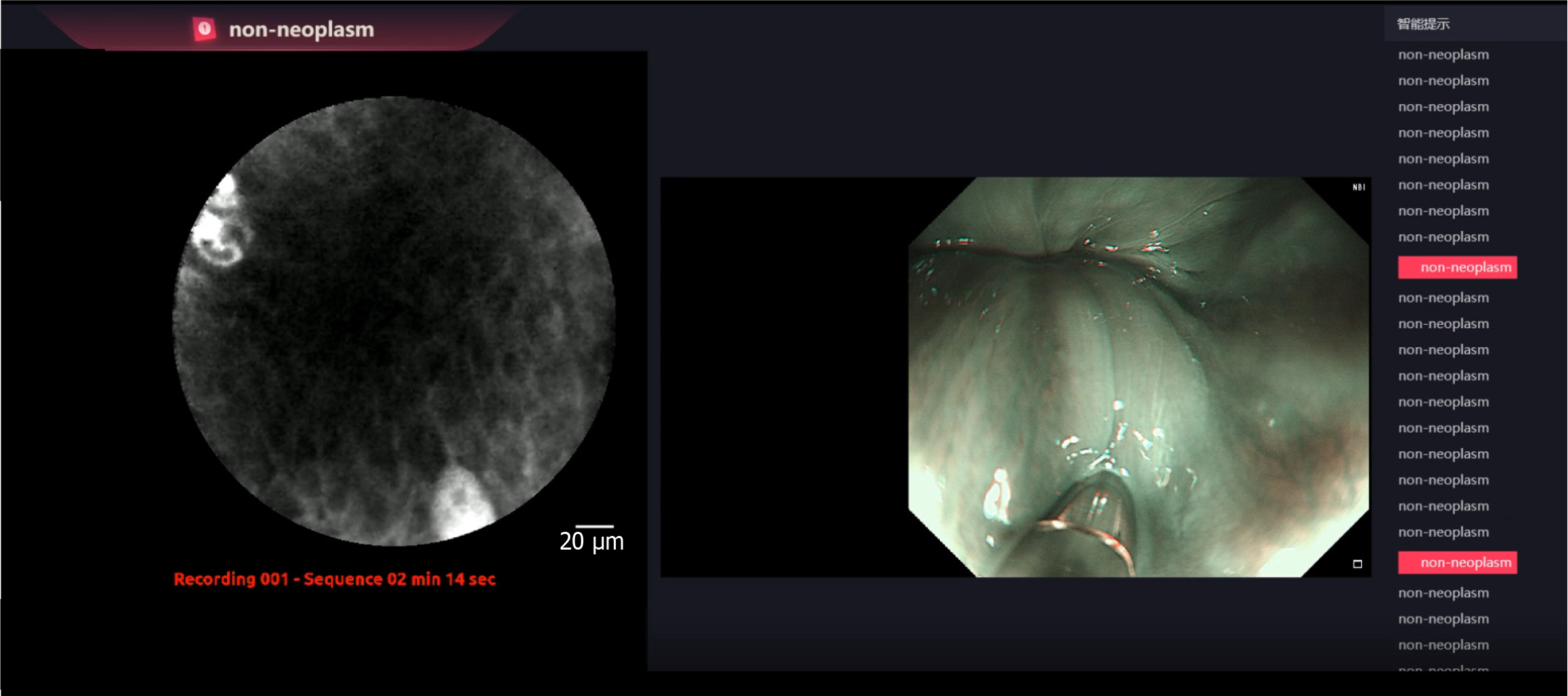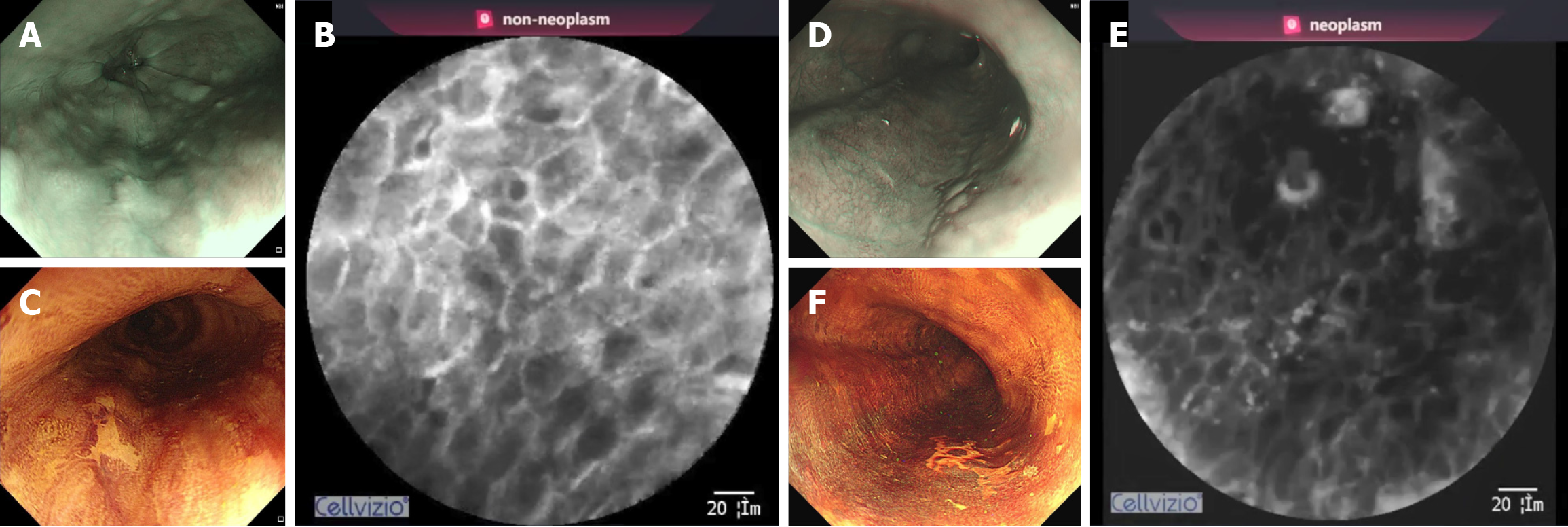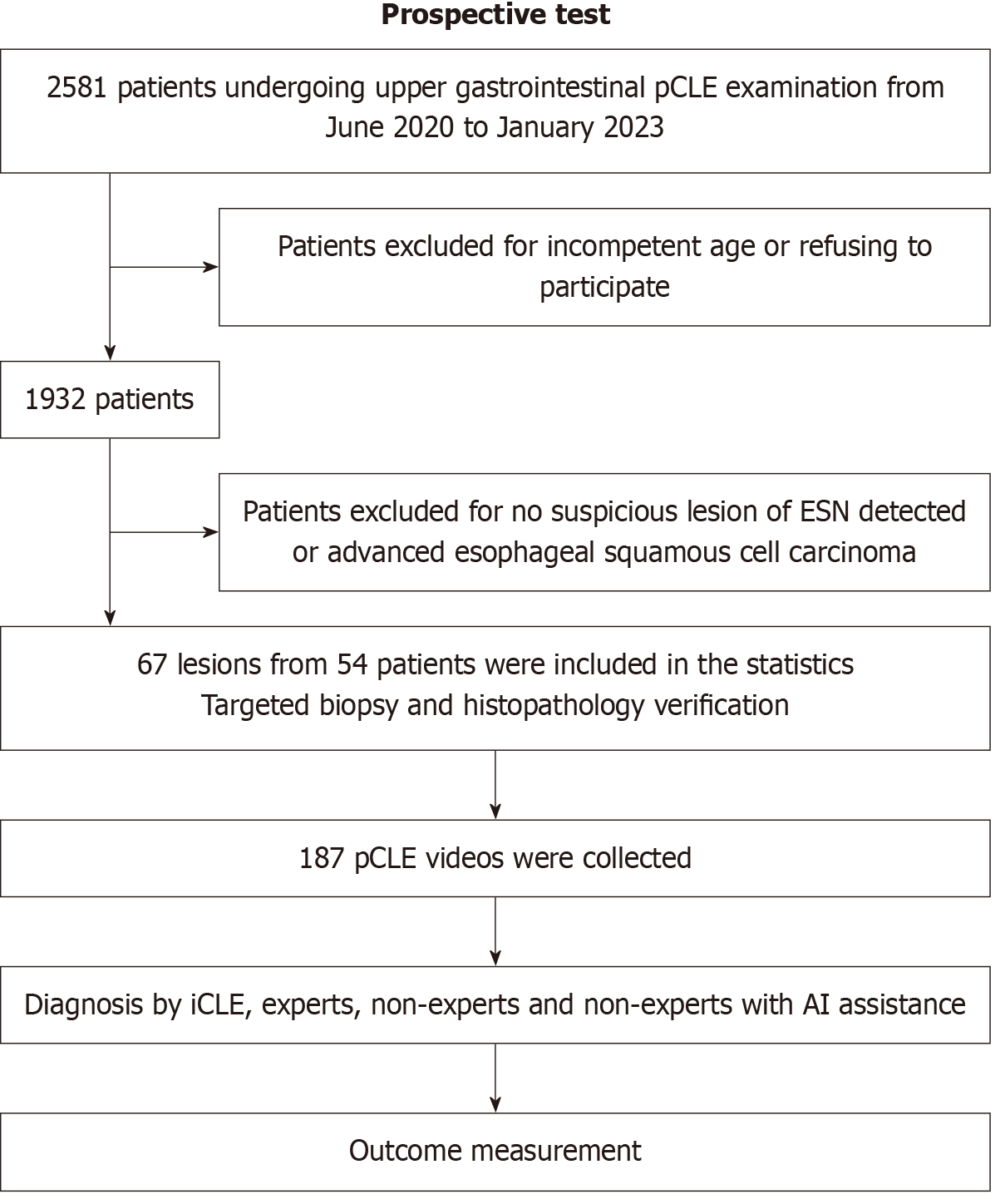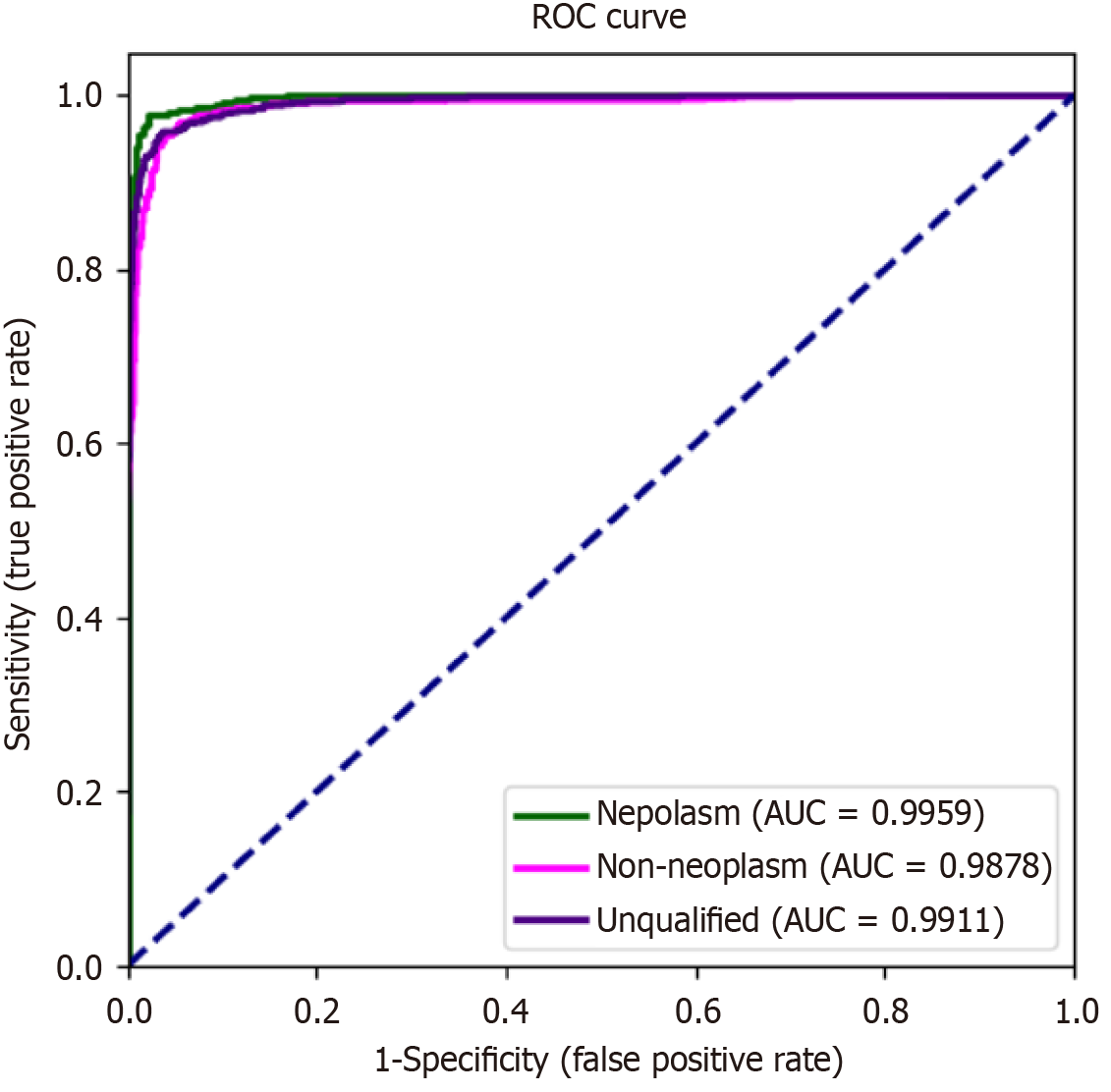Copyright
©The Author(s) 2025.
World J Gastroenterol. Apr 7, 2025; 31(13): 104370
Published online Apr 7, 2025. doi: 10.3748/wjg.v31.i13.104370
Published online Apr 7, 2025. doi: 10.3748/wjg.v31.i13.104370
Figure 1 Workflow diagram for the development of intelligent confocal laser endomicroscopy.
iCLE: Intelligent confocal laser endomicroscopy; pCLE: Probe-based confocal laser endomicroscopy.
Figure 2 Work interface of intelligent confocal laser endomicroscopy.
The intelligent confocal laser endomicroscopy system could show the images of probe-based confocal laser endomicroscopy with real-time artificial intelligence diagnosis, white-light endoscopy or narrow-band imaging, and the artificial intelligence diagnosis for each frame of the video.
Figure 3 Diagnosis of intelligent confocal laser endomicroscopy for esophageal lesions.
A: A brownish lesion observed on narrow-band imaging (NBI); B: Probe-based confocal laser endomicroscopy (pCLE) image of inflammatory epithelium; Intelligent confocal laser endomicroscopy (iCLE) shows the diagnosis of non-neoplasm; C: The lesion shows Lugol-voiding on Lugol’s iodine chromoendoscopy (LCE) after the pCLE procedure; D: Another brownish lesion observed on NBI; E: PCLE image of esophageal squamous neoplasms with the squamous maturation score was 0; ICLE shows the diagnosis of neoplasm; F: Lugol-voiding observed on LCE.
Figure 4 Workflow diagram for the prospective validation of intelligent confocal laser endomicroscopy.
ESN: Esophageal squamous neo
Figure 5 Receiver operating characteristic curve for intelligent confocal laser endomicroscopy in the diagnosis of probe-based confocal laser endomicroscopy images.
ROC: Receiver operating characteristic curve; AUC: Area under curve.
- Citation: Ma T, Liu GQ, Guo J, Ji R, Shao XJ, Li YQ, Li Z, Zuo XL. Artificial intelligence-aided optical biopsy improves the diagnosis of esophageal squamous neoplasm. World J Gastroenterol 2025; 31(13): 104370
- URL: https://www.wjgnet.com/1007-9327/full/v31/i13/104370.htm
- DOI: https://dx.doi.org/10.3748/wjg.v31.i13.104370









